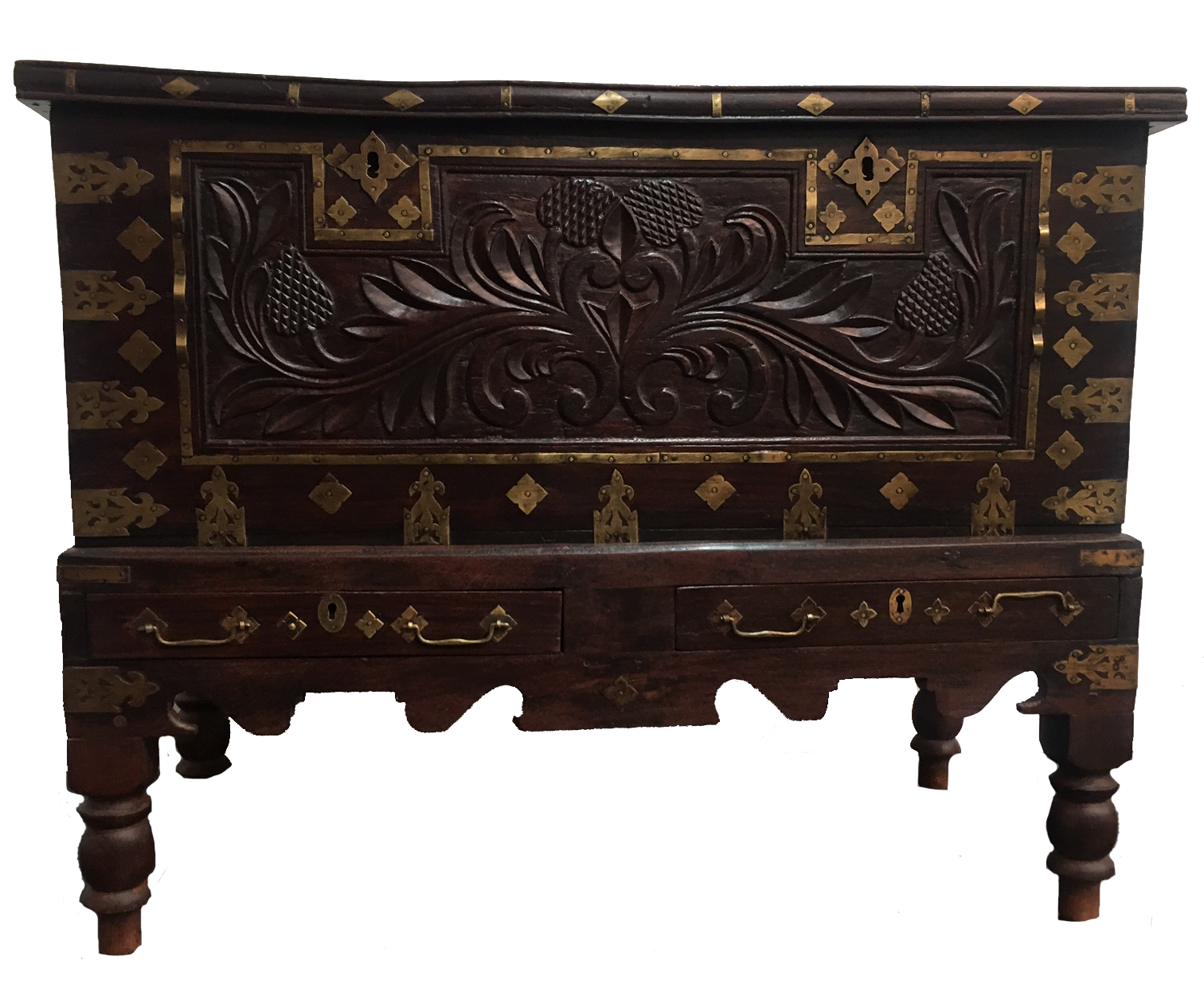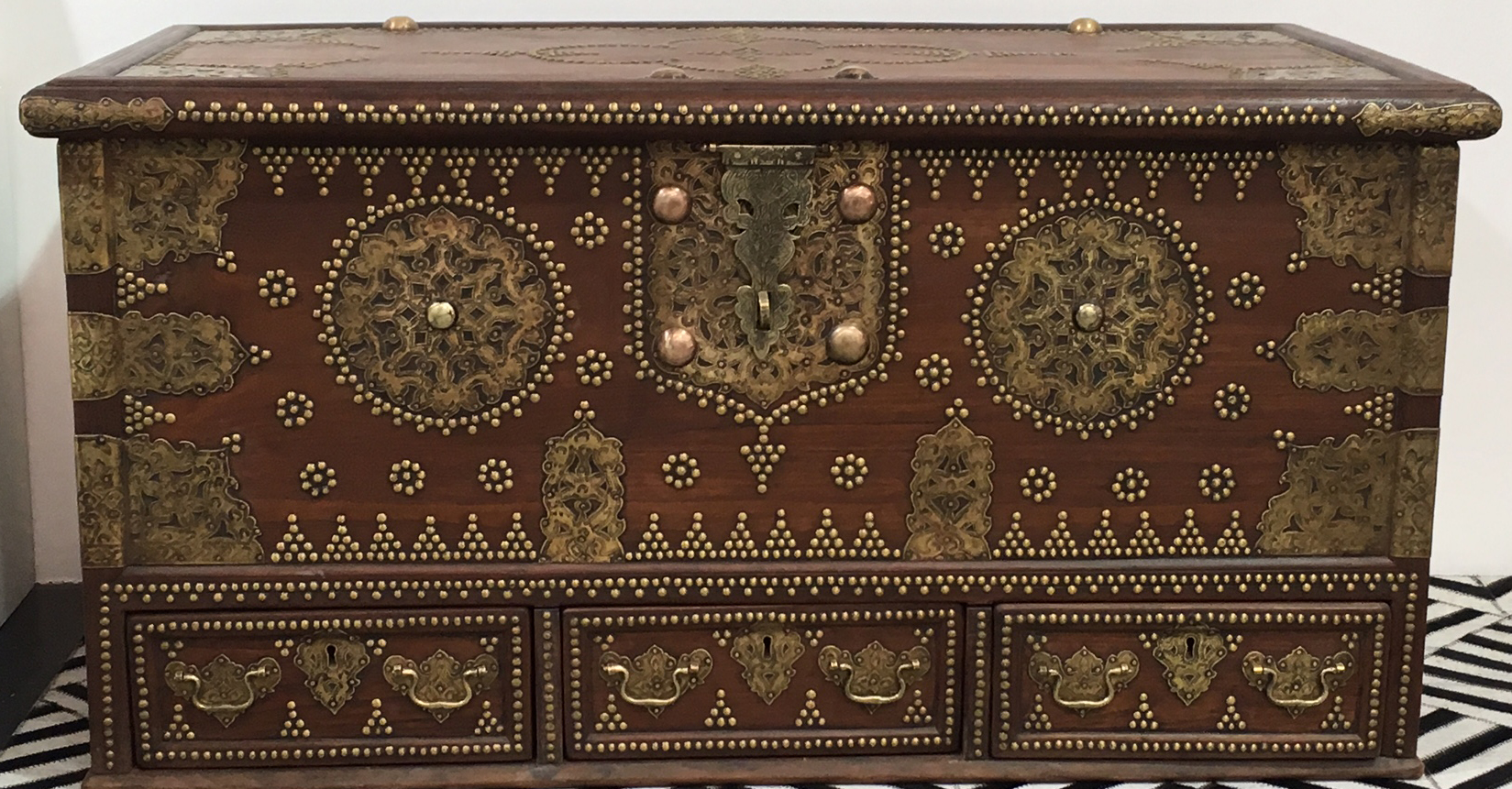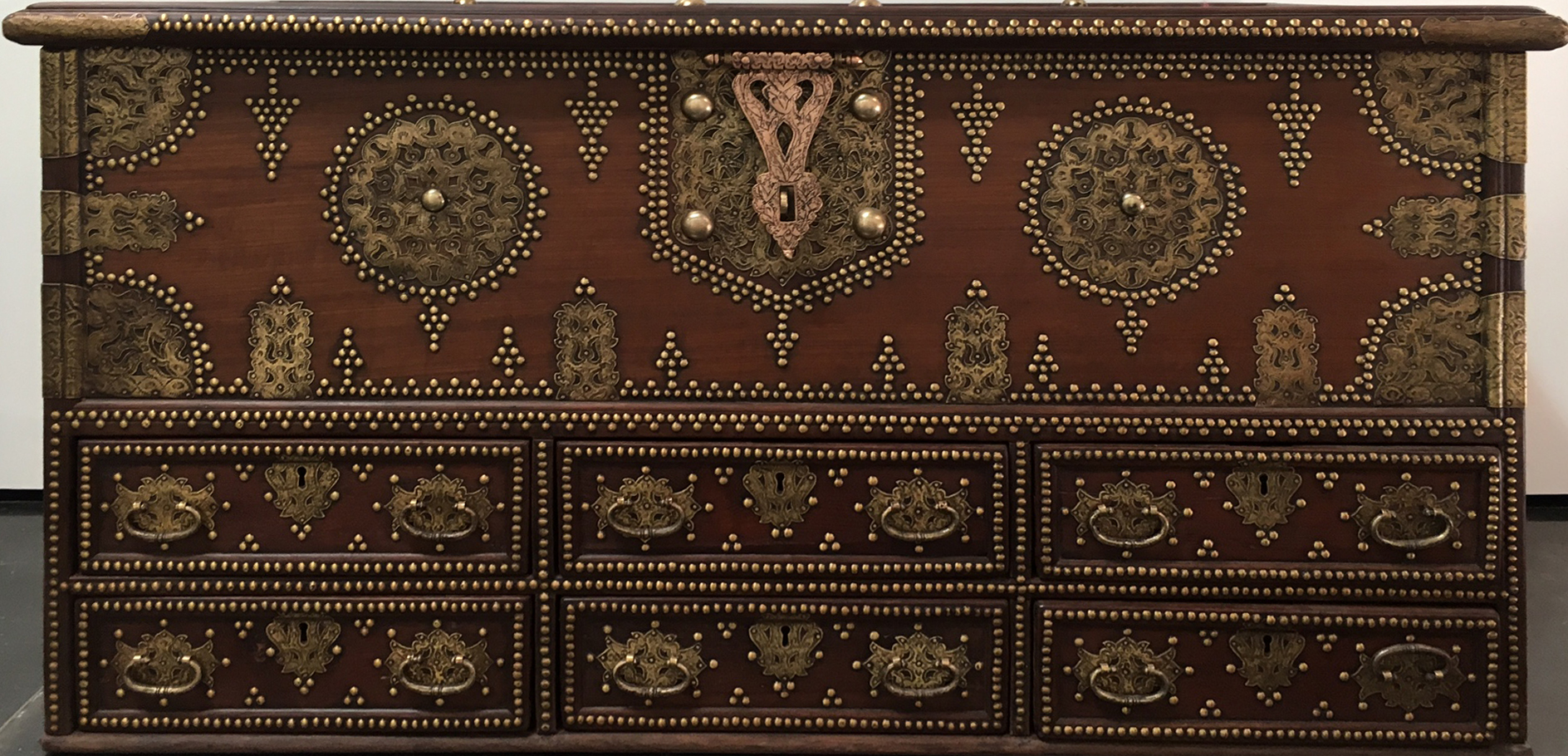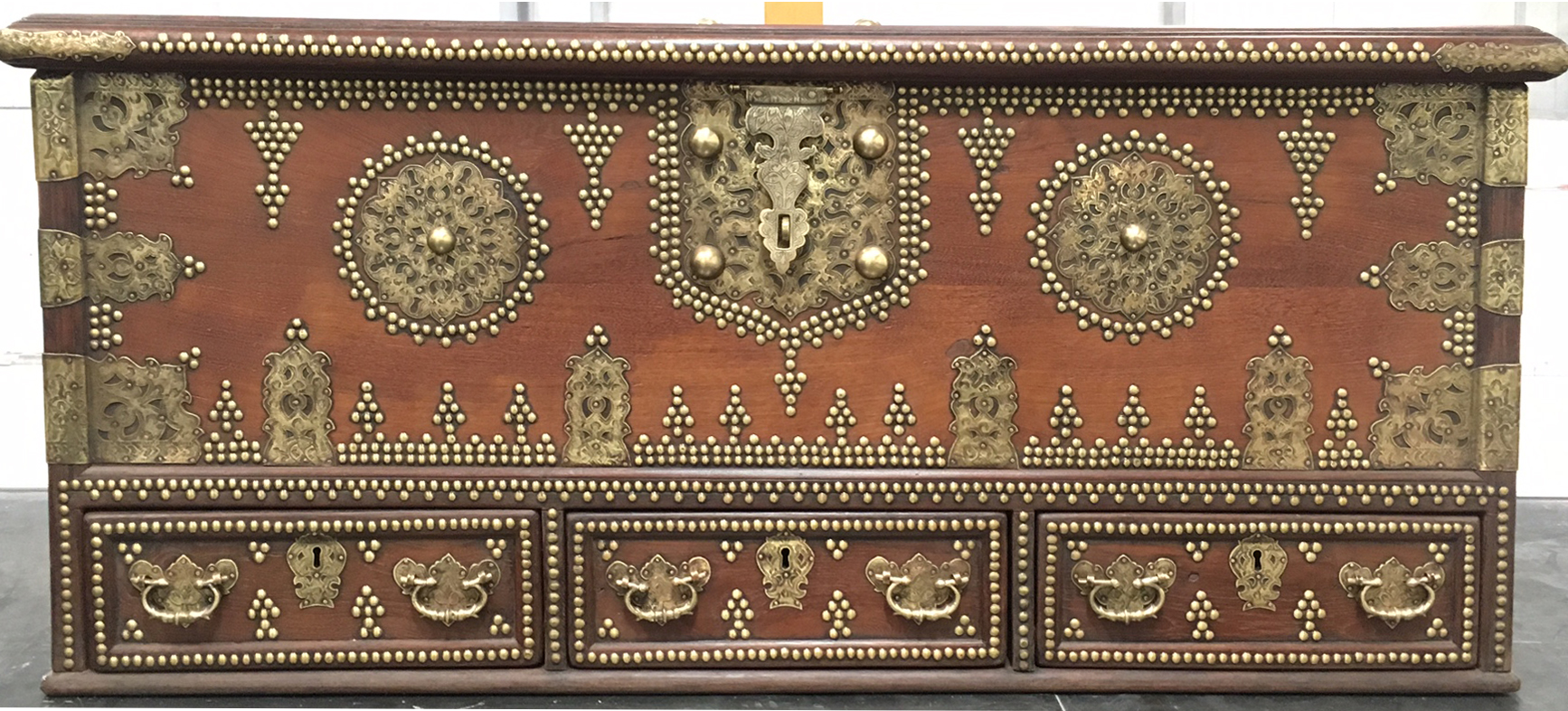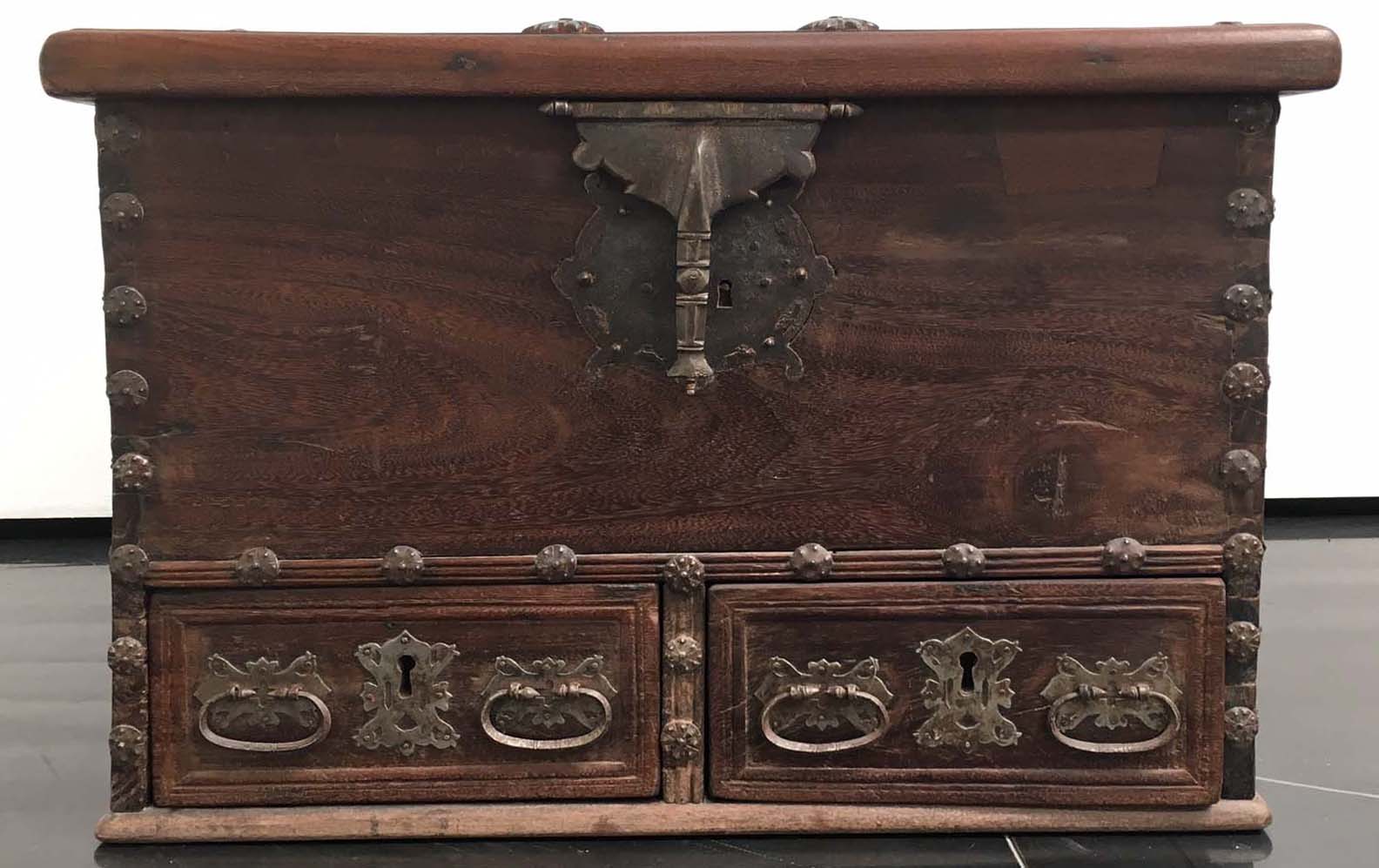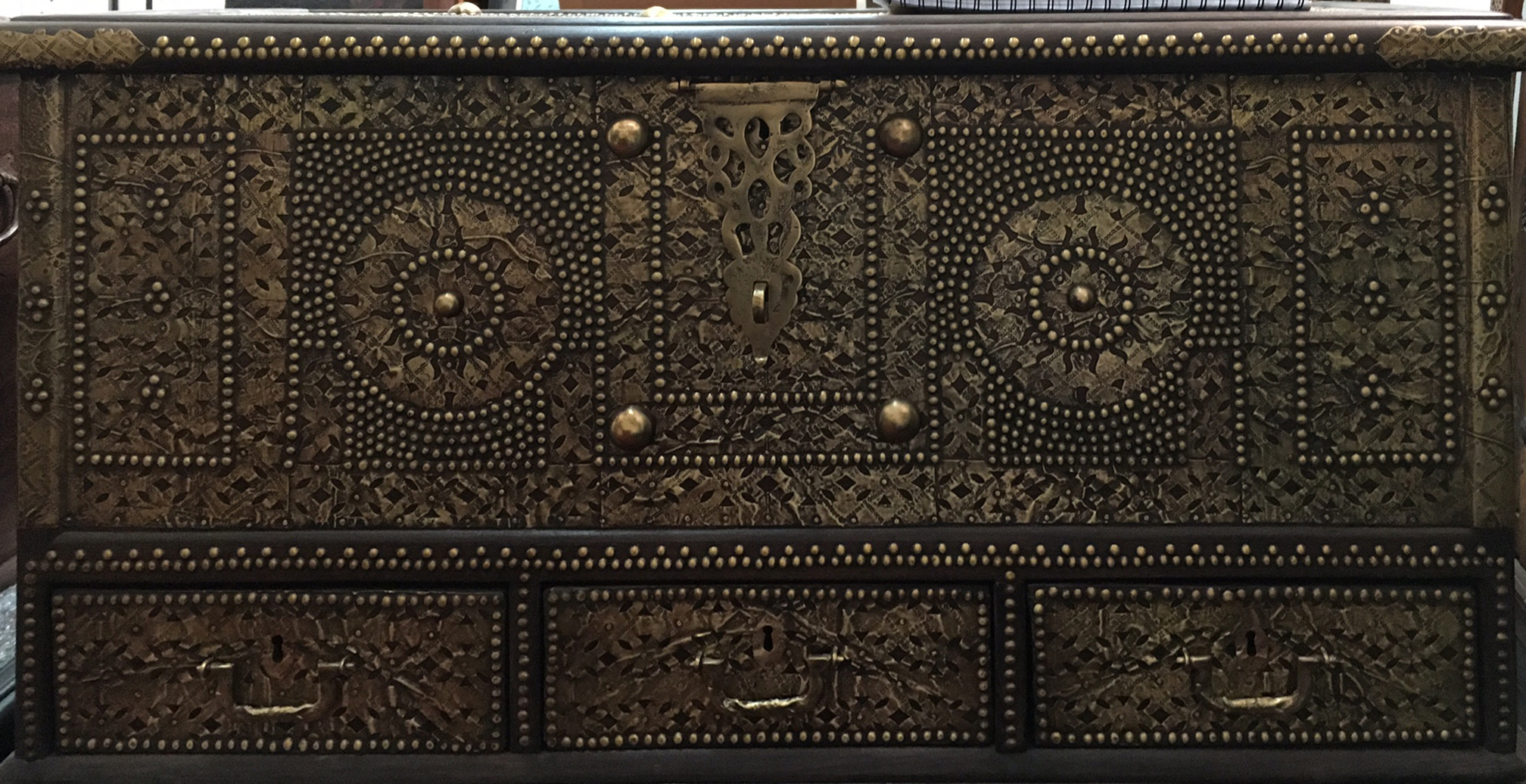In the majority of local (Southern Arabia) households prior to the start of modern development around 1950, chests were the only form of furniture and therefore are one of the few truly indigenous antiques. Not only did they form a functional purpose but were also used as a medium for the expression of decorative art.
Like the treasures they once held within their dark and woody depths, the beautiful hand made chests once used during the past several centuries across the Arabian peninsular, are becoming more rare with each passing year. No two chests are exactly alike and every one should be considered a work of art in its own right.
The oldest chests available at Showcase date back to the arrival of the Portuguese in Oman in the early 16th century. Made of Brazilian mahogany and often secured with a complex iron clasp and lock, they belonged to Portuguese officers, administrators and traders and were used to store personal possessions and weapons. When the explorers returned home they frequently left the chests behind - a reminder of their presence in that area. The Omanis later copied the style, including the small covered compartments on the inside, however, adjustments were made accordingly. They used teak, rosewood and jackfruit wood instead of mahogany and decorated the chests with dark wood beading, brass flowers, emblems and flat-pressed brass plates with Islamic patterns reflecting the inherent culture of the area.
The prized Mandoos chest was the most highly decorated with three or sometimes four drawers at the base and is referred to as a ‘wedding chest’. It is possible to categorise chests by design such as Shiraz, Surat, Bombay, Malibar. These titles are not indicative of the origin but rather reflect their style and therefore they are better categorised by use such as wedding, domestic storage, sea or pearl chests.
All our antiques come with a certificate of authenticity stating full description and date.

